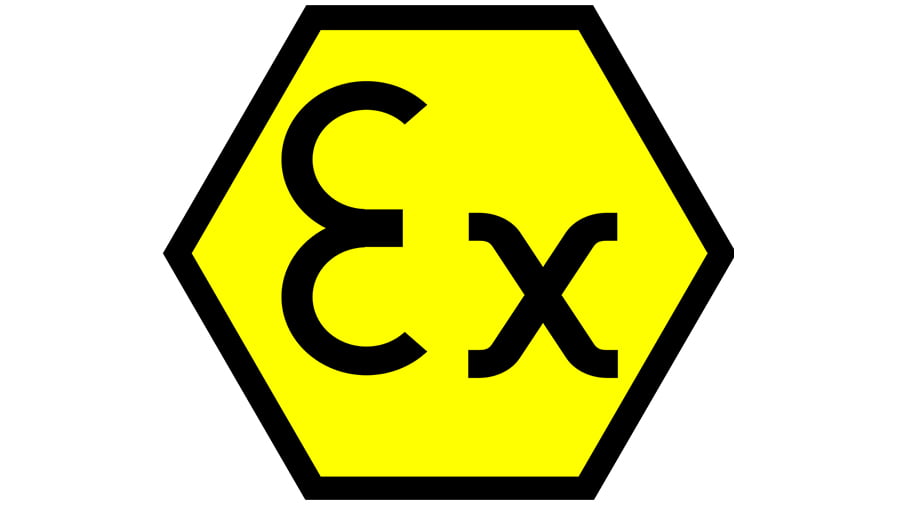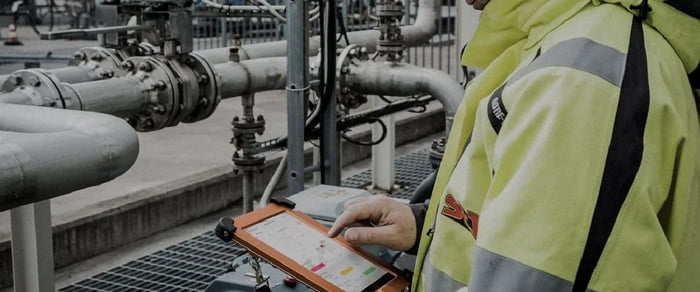Do you know that the smartphone you carry everywhere can cause a short circuit and hurt you in a hazardous area?
Now imagine having equipment that prevents that from ever happening.
Even more, you can carry any portable electrical device you own into a hazardous area.
All you need to do is use equipment that complies with the ATEX directive.
Compliance with the ATEX Directive plays a pivotal role in ensuring the safety of equipment used in such environments.
Creating a safe and hazard-free workplace is of paramount importance in industries where explosive atmospheres pose risks to personnel and infrastructure.
Before declaring an equipment compliant, safety professionals, facility managers, and procurement specialists will need to go through the following stages with the ATEX Directive:
- Compliance
- Assessment
- Choosing
- Installation
- Promotion
- Continuous improvement
By understanding the requirements and obligations outlined in the directive, as well as the role of different stakeholders, you can effectively navigate the complexities of ATEX compliance and make informed decisions.
With the support of Intrinsically Safe Store and its wide range of ATEX-certified safety products, you can prioritize workplace safety and meet the stringent regulations to establish a hazard-free environment.
Let us embark on this journey to enhance safety and compliance in hazardous industries.
Understanding the ATEX Directive: Ensuring Compliance for a Hazard-Free Workplace
The ATEX Directive is a critical framework designed to regulate equipment and protective systems intended for use in potentially explosive atmospheres.
The directive consists of two main components: the ATEX equipment directive (2014/34/EU) and the ATEX workplace directive (1999/92/EC).
The ATEX equipment directive (2014/34/EU) lays down the essential health and safety requirements that manufacturers must meet to ensure that their equipment is safe for use in explosive atmospheres.
It covers a wide range of equipment, including electrical and mechanical devices, protective systems, components, and safety devices. All these products can be found at the Intrinsically Safe Store.
It is important to note that this directive has different ratings. The most common ratings are ATEX Zone 2 (lowest risk), ATEX Zone 1, and ATEX Zone 0 (Highest risk).
- ATEX Zone 2 covers areas where an explosive atmosphere consisting of a mixture with air of dangerous substances such as gas, vapor, or mist is not likely to occur in normal operation, but if it does occur, will persist for a short period only.
- ATEX Zone 1 is an area where the explosion is likely to occur in normal operation occasionally.
- ATEX Zone 0 covers an area where the explosion is present continuously or for long periods.
The Intrinsically Safe Store offers equipment for zone 2 and 1 since these are the most common in industrial use.
Learn More: Atex Zone 1 Intrinsically Safe Cases
Similarly, the ATEX workplace directive (1999/92/EC) complements the equipment directive by addressing the protection of workers who may be exposed to explosive atmospheres. It provides guidelines for employers and operators of facilities to assess and manage the risks associated with potentially explosive environments.
The directive emphasizes on the importance of conducting risk assessments, implementing preventive measures, and ensuring appropriate safety procedures and training.
Safety professionals, facility managers, and procurement specialists play crucial roles in ensuring compliance with the ATEX directive.
- Safety professionals. These are responsible for conducting risk assessments in facilities with potentially explosive atmospheres. They identify potential hazards, assess the risks, and recommend appropriate preventive measures, including the selection and specification of intrinsically safe equipment. They also oversee the implementation of safety procedures, training programs, and emergency response plans.
- Facility managers. These have the responsibility of ensuring that their facilities comply with the ATEX workplace directive. They oversee the implementation of safety measures, such as zoning hazardous areas, implementing adequate ventilation and containment systems, and maintaining appropriate levels of cleanliness to minimize the accumulation of combustible materials.
- Procurement specialists. These work closely with manufacturers and suppliers to ensure that the equipment being purchased meets the necessary ATEX requirements and carries the required certifications.
When safety professionals, facility managers, and procurement specialists work together, they ensure compliance and maintain a hazard-free workplace.
By adhering to the requirements and obligations outlined in the directive, organizations can effectively mitigate risks and protect both personnel and critical assets.
By comprehending the key aspects of the ATEX Directive, you can make informed decisions and prioritize the safety of your workforce and workplace.
Conducting a Thorough Assessment for ATEX Directive Compliance
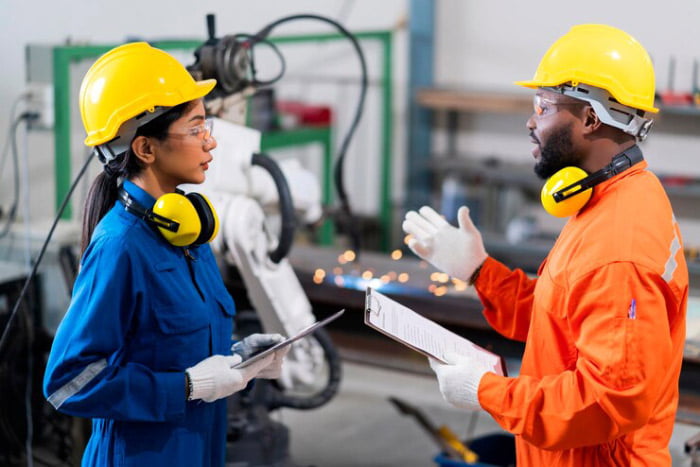
To ensure a hazard-free workplace and comply with the ATEX directive, it is crucial to conduct a comprehensive assessment of your ATEX compliance needs.
This assessment forms the foundation for selecting the appropriate intrinsically safe equipment and establishing a safe working environment in hazardous industries.
By following these steps, safety professionals, facility managers, and procurement specialists can effectively assess their ATEX compliance requirements and make informed decisions:
Conduct a Thorough Hazard Assessment:
- Identify potential explosive atmospheres and hazardous zones within your facility.
- Consider factors such as flammable gasses, vapors, or combustible dust that may be present.
- Assess the frequency and duration of potentially explosive atmospheres.
Identify Relevant ATEX Categories and Zones:
- Determine the ATEX category for your equipment based on its intended use and the level of protection required.
- Identify the appropriate ATEX zones within your facility, considering the likelihood and duration of explosive atmospheres.
Evaluate Intrinsically Safe Store Products for Alignment:
- Explore the range of intrinsically safe equipment available at the Intrinsically Safe Store.
- Ensure that the safety cameras, safety fans, safety lighting, and mobile devices for hazardous environments align with your identified ATEX categories and zones.
By conducting a thorough assessment of your ATEX compliance needs, you lay the groundwork for selecting the right equipment to create a safe and compliant workplace.
Intrinsically Safe Store offers a wide range of ATEX-certified safety products designed to meet these specific requirements, ensuring that you can prioritize safety without compromising productivity.
The table below summarizes that steps to take when conducting a thorough assessment for Atext Directive compliance and the consideration for each step.
| Step | Description | Considerations |
| 1. | Identify potential hazards | Flammable gasses, vapors, dust, or combustible materials |
| 2. | Assess the likelihood of explosive atmospheres | Frequency and duration of presence of hazardous substances |
| 3. | Determine hazardous zone classification | Zone 0, Zone 1, or Zone 2 |
| 4. | Evaluate the ATEX category requirement | Category 1, Category 2, or Category 3 |
| 5. | Identify specific equipment needs | Lighting, communication, and monitoring |
Choosing the Right ATEX-Compliant Equipment for a Hazard-Free Workplace
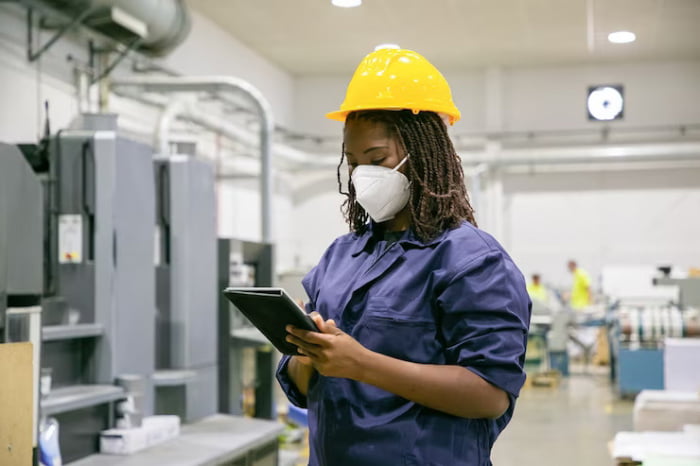
When it comes to creating a hazard-free workplace, selecting the right ATEX-compliant equipment is paramount.
The ATEX Directive lays out specific requirements for equipment used in explosive atmospheres and ensuring compliance is crucial for maintaining a safe working environment.
By avoiding common pitfalls and making informed decisions, safety professionals, facility managers, and procurement specialists can prioritize the safety of their workforce.
Intrinsically Safe Store offers a range of reliable and ATEX-compliant safety products, including safety cameras, safety fans, safety lighting, and mobile devices designed for hazardous environments.
⭐⭐⭐⭐⭐
“This is an awesome electric blower. Powered by the fire truck circuit when performing PPV at the entrance of the building. It’s a powerful fan.” — Archeal, Verified Buyer
The following are key factors to consider when selecting ATEX-compliant equipment, ensuring both compliance with safety regulations and the overall safety improvement of your workplace.
Equipment Classification and Marking Requirements
Equipment intended for use in different ATEX zones must undergo specific testing and meet certain standards to ensure they are safe and suitable for the intended environment. Once the equipment is deemed compliant, it must bear the appropriate markings to indicate its compliance with the relevant ATEX regulations.
The markings mostly include the ATEX logo, the equipment zone category, and additional information such as the manufacturer’s name or identification code, serial number, and year of manufacture. These markings provide clear visual identification of the equipment’s sustainability for use in a particular ATEX zone.
Evaluating Suppliers and Manufacturers
Choose suppliers and manufacturers with a proven track record of ATEX certification and quality assurance.
These suppliers and manufacturers can be identified with the following items:
- Industry Reputation. Research the supplier or manufacturer’s reputation in the industry. Look for feedback from customers, reviews, and testimonials. Check if they have a history of delivering ATEX-compliant equipment and maintaining quality standards.
- ATEX Certifications. Check if the supplier or manufacturer holds relevant ATEX certifications themselves. They should have their own certification as an indication of their commitment to producing compliant equipment.
Examples of certifications include ATEX Directive 2014/34/EU certification, ISO 9001 (Quality Management System), and ISO 80079 (Explosive Atmospheres).
- Compliance documentation. Request documentation or evidence of their compliance with ATEX regulations. They should be able to provide information on their adherence to specific ATEX requirements, testing procedures, and quality control processes.
- Experience and Expertise. Consider the supplier or manufacturer’s experience and expertise in producing ATEX-compliant equipment. Look for indications that they have been in the industry for a considerable period and have successfully supplied ATEX equipment to various customers.
After choosing your preferred supplier verify that the equipment comes with relevant certifications and meets necessary safety standards.
You can do this by considering the following factors:
- ATEX Certification. Verify that the equipment has obtained the required ATEX certification for the specific zone it will be used in. Check for the appropriate marking on the equipment, such as the ATEX logo, category, and any other relevant information indicating compliance.
- Safety Standards. Check if the equipment complies with relevant safety standards specific to your industry or region. For example, in addition to ATEX, there may be additional local or international standards that apply, such as IECEx (International Electrotechnical Commission System for Certification to Standards Relating to Equipment for Use in Explosive Atmospheres).
- Documentation and Testing. Request documentation and test reports that demonstrate the equipment’s compliance with safety standards. This may include test certificates, technical specifications, and performance data.
- Quality Assurance. Inquire about the supplier or manufacturer’s quality assurance processes. Ask about their quality control measures, inspections, and testing procedures to ensure that the equipment consistently meets the required standards.
Fortunately, Intrinsically Safe Store offers a comprehensive selection of ATEX-compliant equipment tailored to hazardous environments.
- Safety cameras. These provide real-time monitoring and recording capabilities, ensuring enhanced safety and surveillance.
- Safety fans. These are designed to operate safely in explosive atmospheres, providing reliable ventilation in hazardous locations.
- Safety lighting solutions. These offer reliable illumination without posing a risk of ignition in potentially explosive areas.
- Intrinsically safe mobile devices. These are designed to withstand harsh conditions and facilitate communication in hazardous environments.
The table below shows some of the ATEX-compliant products available at Intrinsically Safe Store.

|
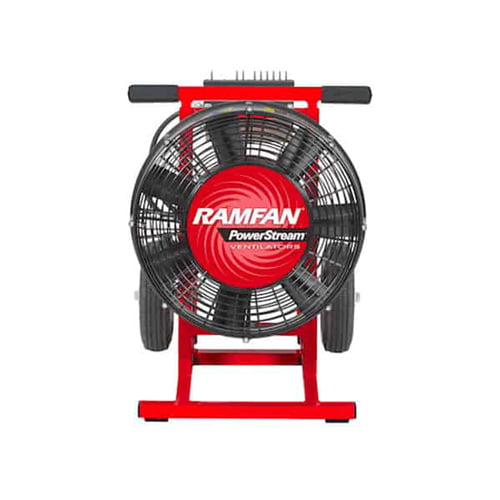
|
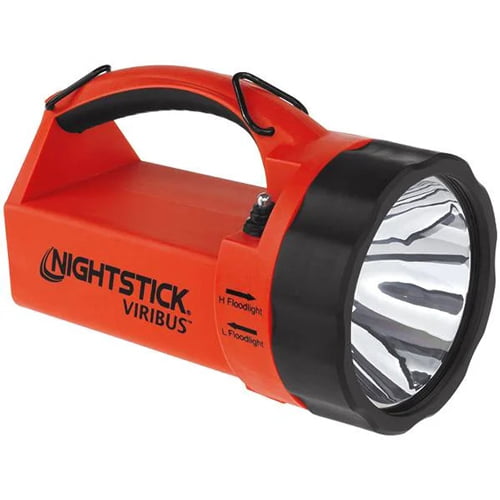
|
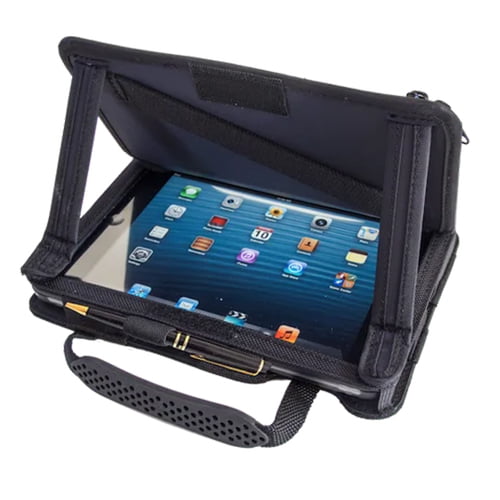
|
By prioritizing ATEX-compliant equipment, such as the products offered by Intrinsically Safe Store, safety professionals, and procurement specialists can ensure compliance with safety regulations, mitigate the risks of operating in an explosive atmosphere, and maintain a hazard-free workplace.
Ensuring Proper Installation, Maintenance, and Documentation for ATEX Compliance
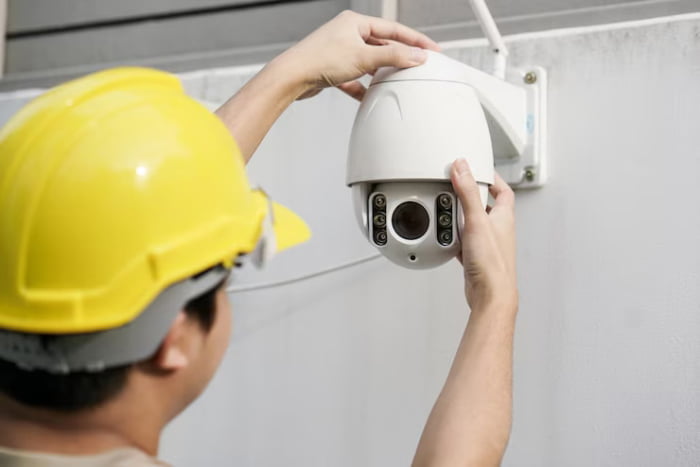
Proper installation, maintenance, and documentation play a pivotal role in ensuring ATEX compliance and maintaining a hazard-free workplace.
By following best practices in these areas, safety professionals, facility managers, and procurement specialists can maximize the effectiveness and longevity of ATEX-compliant equipment.
Installation
Proper installation is important when aiming to maintain the integrity and safety of ATEX equipment. Improper installation can lead to equipment failure, increased risk of ignition sources, and potential hazards. By following correct installation procedures, you minimize these risks and ensure the safe operation of the equipment.
Every ATEX-certified piece of equipment has specific installation requirements outlined by the manufacturer. The manufacturer’s instructions provide detailed information on proper installation techniques, necessary precautions, and any specific considerations to ensure compliance with the ATEX directive.
Always consider the following factors when installing:
- Mounting and Positioning. Follow the manufacturer’s guidelines on the proper mounting and positioning of the equipment. This may include specific requirements for clearance, orientation, or proximity to other components.
- Electrical Connections. Ensure that electrical connections are made correctly, following the specified wiring diagrams and terminal arrangements. Adhere to the recommended cable types, sizes, and installation techniques to maintain electrical safety and minimize the risk of sparking or overheating.
- Grounding and Bonding. Follow the guidelines for proper grounding and bonding of the equipment. This is crucial to prevent the buildup of static electricity, mitigate the risk of sparks, and ensure proper dissipation of electrical charges.
- Environmental Considerations. Take into account any environmental conditions that could impact the safe operation of the equipment, such as temperature, humidity, or exposure to corrosive substances. Adhere to any specific installation requirements related to these factors.
Fortunately, our support team is knowledgeable about the intricacies of the range of safety products in our store and can provide valuable installation assistance.
By consulting with us, you can gain insights into the proper installation procedures for the specific equipment you are using.
Our support team will offer guidance on best practices, answer any questions you may have, and ensure that you follow the manufacturer’s guidelines correctly.
⭐⭐⭐⭐⭐
Best metallic explosion proof flashlight ever.
“The NITECORE EF1 has a simple switch easy to use, super high output up to 830 Lumens, super high quality and thick body tube.” — Jack, Verified Buyer
Maintenance
After installation, develop a well-defined maintenance program that outlines the specific requirements for maintaining ATEX compliance and equipment performance.
This program should include regular maintenance activities, schedules, and procedures to ensure that all aspects of ATEX compliance are addressed. It should also consider the manufacturer’s recommendations and guidelines for maintenance.
Your maintenance program should include regular inspections, testing, and servicing of the ATEX equipment.
This involves checking for any signs of wear, damage, or malfunction that could compromise the equipment’s safety or compliance.
Inspections should be thorough and cover all critical components, wiring, seals, and protective measures. Any issues identified should be promptly addressed through appropriate repairs or replacements.
Fortunately, you can engage with Intrinsically Safe Store’s network of trusted partners who specialize in ATEX equipment maintenance and support. These service providers have the expertise and knowledge required to handle ATEX-specific equipment and ensure compliance with the ATEX Directive.
Collaborating with them can provide access to professionals with the necessary expertise and experience in maintaining ATEX compliance.
Why This Matters: Maintenance of ATEX equipment involves a rigorous program including regular inspections, tests, servicing, and compliance checks. Partnering with experienced professionals ensures its safety and performance.
Documentation
Accurate documentation is essential for ATEX compliance and effective safety management. It involves recording relevant information about the equipment and its compliance status.
To ensure your equipment complies with the ATEX directive, consider the following:
- Equipment Information. Maintain comprehensive records that include details such as equipment specifications, model numbers, serial numbers, and manufacturer information. This information helps identify the specific equipment and track its compliance.
- ATEX Certification. Keep a copy of the ATEX certification documents for each piece of equipment. This ensures that you have the necessary proof of compliance readily available when required.
- Safety Data Sheets. Maintain safety data sheets (SDS) for any hazardous substances used with the equipment. SDS provides important information on the properties, hazards, and safe handling procedures for the substances involved.
But that’s not all, documentation is an ongoing process. Keeping records of inspections, repairs, certifications, and modifications is crucial for demonstrating ongoing compliance and ensuring the equipment remains safe to use.
Consider the following:
- Inspection Reports. Document regular inspections conducted on the equipment. Record the date, details of the inspection, findings, any corrective actions taken, and the name of the inspector.
- Repair and Maintenance Records. Maintain a log of repairs and maintenance activities performed on the equipment. Include details such as the date, description of the work performed, parts replaced, and the name of the technician or service provider.
- Certification Renewals. Keep track of certification renewal dates to ensure that equipment certifications remain up to date. This includes maintaining records of any recertification activities or audits conducted.
- Modifications and Changes. Document any modifications or changes made to the equipment. This includes information on the nature of the modification, the reason for the change, and any additional testing or certification obtained as a result.
Now, this is important. Using digital documentation processes rather than paper-based ones can streamline the documentation process and enhance accessibility.
Consider the following:
- Electronic Document Management. Use electronic document management systems to store and organize ATEX-related documents. This ensures easy retrieval, backup, and sharing of critical information.
- Database Management. Implement a centralized database to track equipment details, inspections, repairs, certifications, and modifications. This allows for efficient record keeping and provides a comprehensive overview of compliance status.
- Reminder Systems. Utilize digital systems to set reminders for upcoming inspections, certifications, or renewals. This helps ensure that important compliance-related activities are not overlooked.
- Mobile Applications. Leverage mobile applications to facilitate on-site inspections and data capture. This enables real-time documentation and reduces the likelihood of errors or delays in recording compliance-related information.
By prioritizing proper installation, regular maintenance, and meticulous documentation, safety professionals can reinforce ATEX compliance and create a culture of safety in the workplace.
Pro Tip: Database management isn’t just for large corporations. Utilize a centralized database for keeping track of equipment details, inspections, repairs, and certifications—it’s your one-stop solution for ATEX compliance.
Intrinsically Safe Store not only offers a wide range of ATEX-compliant equipment but also provides guidance on installation, maintenance, and proper documentation practices to enhance safety and compliance.
Promoting ATEX Compliance Through Training and User Awareness

To ensure effective implementation of ATEX directive compliance and create a hazard-free workplace, training employees and fostering user awareness is paramount.
Proper knowledge and understanding of ATEX regulations and safe equipment usage significantly contribute to maintaining a safe working environment.
Intrinsically Safe Store recognizes the importance of training and user awareness, providing comprehensive resources and support to promote ATEX compliance.
The significance of Training Employees on ATEX Compliance is summarized in the following items:
- Enhanced Awareness and Knowledge. By providing training on ATEX regulations and safety protocols, employees gain a deeper understanding of the potential hazards associated with explosive atmospheres. They become aware of the specific risks, safety measures, and best practices to mitigate those risks.
This knowledge empowers employees to make informed decisions, identify potential dangers, and take appropriate actions to ensure their safety and the safety of others. - Compliance with ATEX Regulations. ATEX regulations impose specific requirements on employees working in hazardous environments. Training ensures that employees are well-versed in these regulations and understand their responsibilities.
Compliance with ATEX regulations helps avoid legal issues, penalties, and reputational damage to the organization. Trained employees can actively contribute to maintaining compliance by following prescribed procedures, utilizing appropriate equipment, and adhering to safety protocols. - Risk Mitigation. Well-trained employees play a vital role in mitigating risks associated with explosive atmospheres. They understand how to handle hazardous substances, operate equipment safely, and respond effectively in emergency situations. Through training, employees learn about hazard identification, risk assessment, and the use of preventive measures.
This knowledge allows them to proactively identify potential hazards, report unsafe conditions, and take necessary precautions to minimize risks, reducing the likelihood of accidents, incidents, and injuries. - Emergency Preparedness and Response. ATEX training equips employees with the skills needed to respond to emergency situations in a prompt and effective manner. They learn evacuation procedures, emergency shutdown protocols, and how to use safety equipment like fire extinguishers or emergency escape breathing apparatus.
With proper training, employees are better prepared to handle emergencies, prevent escalation of incidents, and protect themselves and their colleagues. - Culture of Safety. Training fosters a culture of safety within the organization. When employees receive comprehensive training on ATEX regulations and safety protocols, safety becomes a shared responsibility.
Employees become more mindful of their actions, take safety precautions seriously, and actively contribute to maintaining a hazard-free workplace. They are more likely to identify and report potential hazards, participate in safety inspections, and suggest improvements to safety practices, leading to an overall safer work environment. - Increased Efficiency and Productivity. Well-trained employees are equipped with the necessary skills and knowledge to perform their tasks safely and efficiently. They understand how to use ATEX-compliant equipment correctly, reducing the likelihood of equipment failures or errors.
By adhering to safety protocols, employees can work confidently and without unnecessary interruptions, improving productivity and contributing to the smooth functioning of operations.
Fortunately, Intrinsically Safe Store is committed to promoting ATEX compliance through its training resources and support.
Our support team comprises knowledgeable individuals who are always ready to help you with any inquiry. Our training resources and support positively impact the following areas:
- Expert guidance and consultation services. Intrinsically Safe Store offers expert guidance and consultation services to assist organizations in navigating ATEX compliance.
For example, they may have knowledgeable staff available to provide personalized advice and recommendations based on the specific needs and requirements of a customer’s workplace. This guidance may include zone classification assessments, equipment selection recommendations, and guidance on implementing safety measures in accordance with ATEX regulations. - Assisting customers in selecting the right intrinsically safe equipment. Intrinsically Safe Store supports customers in selecting the appropriate intrinsically safe equipment for their specific requirements. They may provide assistance in understanding and evaluating different equipment options to ensure compliance with ATEX regulations.
For instance, they can help customers identify equipment suitable for different ATEX zones, taking into account factors such as temperature range, gas groups, and dust types. This support ensures that customers choose equipment that meets their specific safety needs. - Offering training and educational resources. Intrinsically Safe Store provides training and educational resources to enhance awareness and understanding of ATEX regulations and safety protocols. They may offer training programs, workshops, or online modules that cover topics such as ATEX fundamentals, risk assessment, safe equipment usage, and emergency procedures.
These resources equip individuals and organizations with the knowledge necessary to maintain a hazard-free workplace and effectively adhere to ATEX compliance requirements. - Providing ongoing updates, technical support, and fostering partnerships. Intrinsically Safe Store demonstrates its commitment to ongoing support by providing customers with updates on regulatory changes that may impact ATEX compliance.
They may communicate changes to ATEX directives, standards, or certification requirements, ensuring that customers stay informed and up to date. Additionally, they offer technical support services to address any issues or concerns related to intrinsically safe equipment.
This can include troubleshooting assistance, repair services, and maintenance recommendations. Intrinsically Safe Store may also foster partnerships with customers, engaging in regular discussions, sharing insights, and offering proactive recommendations for safety improvement initiatives based on evolving ATEX regulations and industry best practices.
By investing in comprehensive training programs and fostering user awareness, organizations can ensure that employees have the knowledge and skills necessary to operate intrinsically safe equipment safely.
Intrinsically Safe Store’s dedication to providing training resources ensures that employees are equipped with the required expertise to comply with ATEX regulations and maintain a safe working environment.
Enhancing Safety Through Auditing and Continuous Improvement
To create a hazard-free workplace and ensure ongoing compliance with the ATEX directive, auditing, and continuous improvement play vital roles.
By regularly assessing ATEX compliance and actively seeking opportunities for improvement, safety professionals, facility managers, and procurement specialists can enhance workplace safety and minimize risks associated with explosive atmospheres.
Intrinsically Safe Store, a trusted provider of ATEX-compliant safety products, emphasizes the importance of auditing and continuous improvement to foster a culture of safety.
Through regular audits, incident reviews, and feedback collection, organizations can identify areas for enhancement and implement necessary changes.
By prioritizing safety regulations and actively pursuing continuous improvement, businesses can create a safer work environment for all personnel.
Intrinsically Safe Store is dedicated to supporting these efforts by providing reliable ATEX-compliant equipment and encouraging feedback and suggestions for ATEX compliance enhancement.
Learn more about Intrinsically Safe Store in the video below.
Prioritize Safety and Compliance: Achieving ATEX Directive Compliance for a Hazard-Free Workplace
In a hazardous industry, ensuring the safety of personnel and maintaining compliance with the ATEX Directive is of utmost importance.
By following the guidelines outlined in this guide, safety professionals, facility managers, and procurement specialists can effectively ensure their equipment complies with the ATEX Directive and create a hazard-free workplace.
Intrinsically Safe Store offers a wide range of ATEX-compliant safety products, including safety cameras, fans, lighting, and mobile devices designed specifically for hazardous environments.
Remember, achieving ATEX directive compliance requires careful assessment, selection of ATEX-compliant equipment, proper installation and maintenance, thorough documentation, comprehensive training, regular auditing, and continuous improvement.
By prioritizing safety and compliance, you not only safeguard your workforce but also establish a culture of safety in your organization. Choose an Intrinsically Safe Store for your ATEX-compliant equipment needs.
With our commitment to providing high-quality safety products and excellent service, Intrinsically Safe Store is your trusted partner in achieving ATEX directive compliance and maintaining a hazard-free workplace.
⭐⭐⭐⭐⭐
“The best in its class, the Explosion Proof CCTV Camera IVC AMZ-3041-2 X-Series is certified Class I Division 1, Class 2, IECEx with ATEX 94/9/EC rating. The high resolution day/night camera is very helpful when it’s getting dark. The camera itself is very durable as it is made of a heavy-duty, cast-aluminum enclosure. This is highly useful in a hazardous environment.” — Mikel, Verified Buyer


